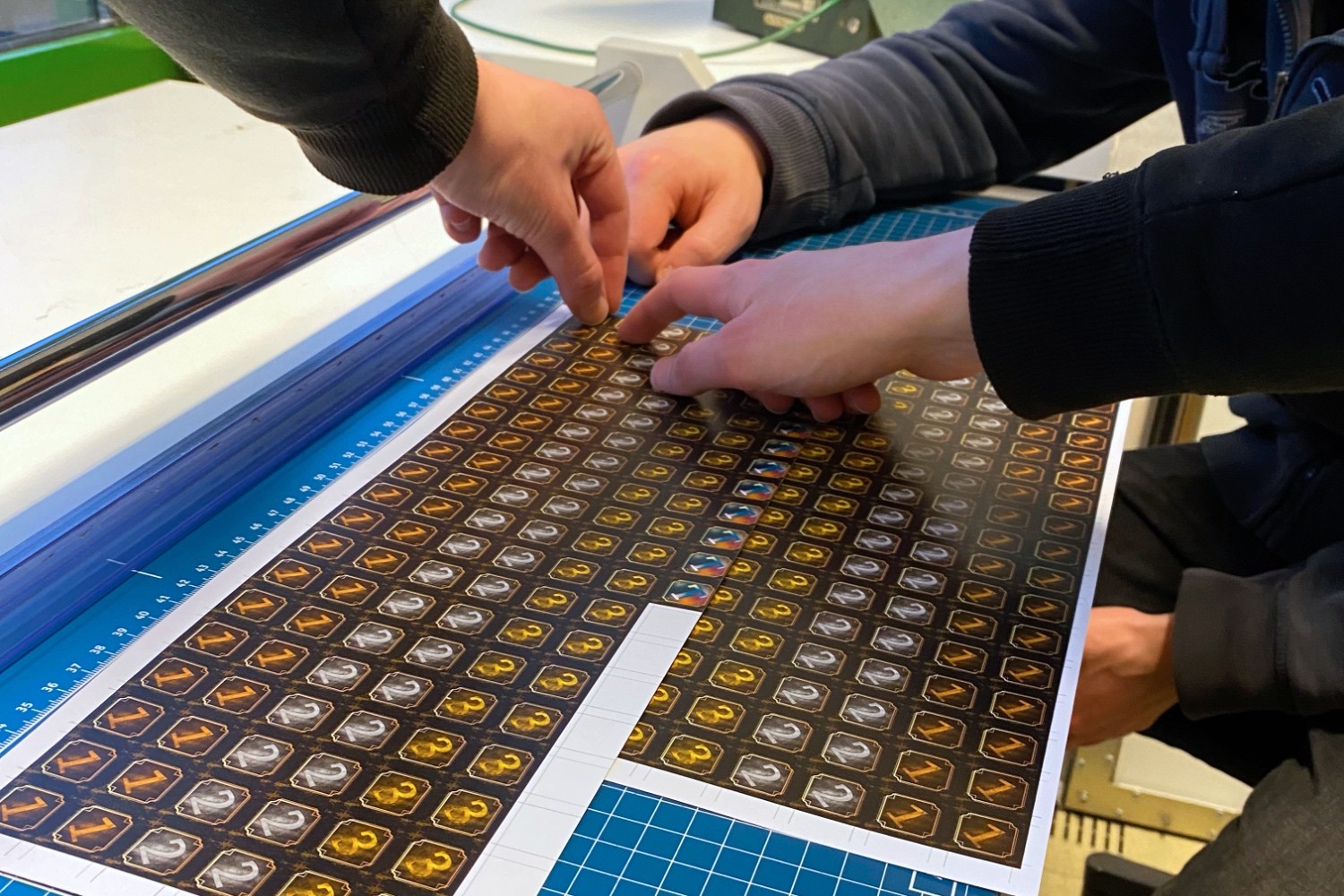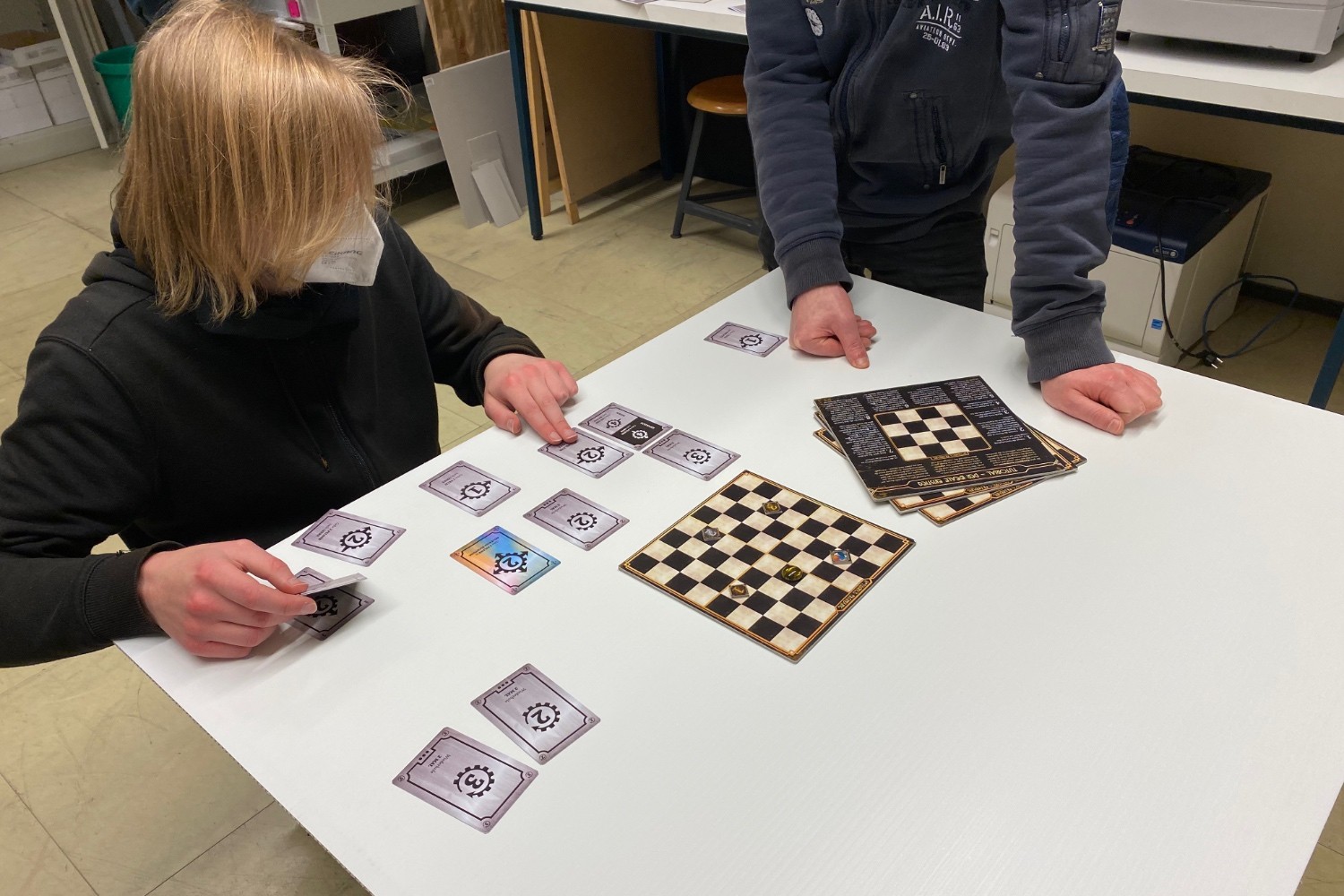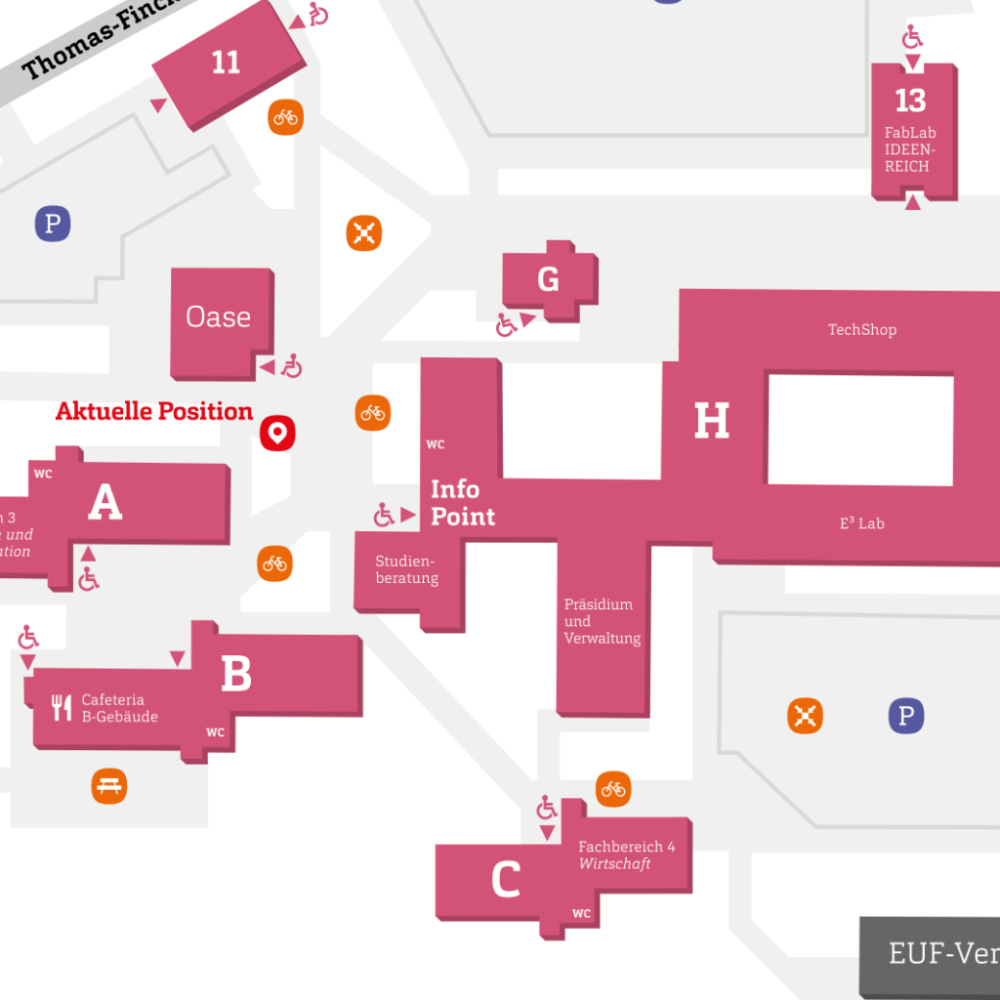Description
As part of the study course “Game Design” at Flensburg University of Applied Sciences, my team and I developed a game called “Rotwangs Erfindung” (Rotwang’s Invention). It is a board game for 2–4 people aged 10 and over and every aspect of it—developing the ruleset, designing the game materials, producing a playable prototype—was done entirely on our own.
How the game works
Rotwangs Erfindung teaches the player the basic mechanics of programming and algorithms in a fun and playful manner. Each participant gets a game board (set up like a chessboard), a playing figure and a handful of cards. These cards must be used to create instruction sequences that are used to move the playing figure across the board. The goal is to create an instruction sequence that allows to collect as many points lying on the board as possible. These instruction sequences closely resemble typical algorithmic sequences found in computer programs.
The following video, although in German, might help to get a grasp of the game’s principle:
The game’s style
The game’s visual design, story, as well as the eponymous inventor “Rotwang”, are all based on Fritz Lang’s monumental film Metropolis from 1927. Accordingly, stylistic elements of Art Deco and Steampunk (“Deco Punk”) are elementary components of its visual design. The game experience is encapsulated by an accompanying story:
The ingenious scientist C. A. Rotwang was driven into exile shortly before he could complete his invention of the century, the Machine Man. It is now up to Rotwang’s students (the players) to prove themselves in the challenge to take up Rotwang’s legacy and complete his magnum opus.
The story is explained to the players by written letters that are part of the game’s instructions.
The project
The game mechanics were developed through an iterative process consisting of several concept studies and playtests. Due to the COVID-19 pandemic, all project work had to take place online. In order to carry out the playtests purely digitally, we used Miro to simulate a board game in a virtual space as well as a self-written Unity tool that generates playing cards according to the rules we defined. I was responsible for developing this card generator, as well as leading the art direction for the game.
After the formal completion of the project, my team and I were invited by our lecturer to produce a real-world prototype of Rotwangs Erfindung. For this, we made use of the in-house printing and cutting tools at Flensburg University of Applied Sciences (see pictures).













